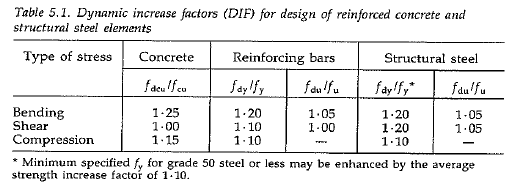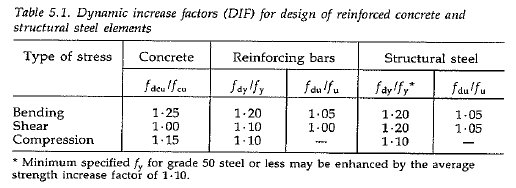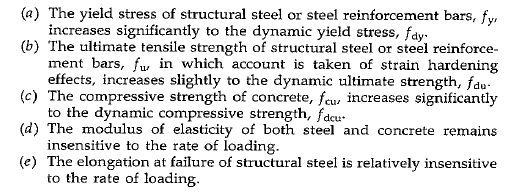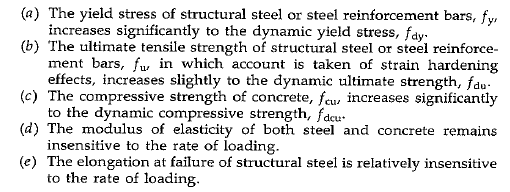Increase in characteristic forces under impulse-type loading
Characteristic strengths can be increased when the rate of change of elongation is very high. For example, consider a column exposed to an explosive charge. Charging time is very short. It is generally less than the structure's response time.
When we talk about explosion exposures, the time is given in milliseconds. The duration of the load on the structure is, in most cases, less than one second. Everything happens in a very short period of time.
Several studies have been carried out on these topics. Thousands of technical articles have been published on this topic. If we search on Google we can find almost everything about the designs. However, there is very limited information available on the Internet or in books.
The book “Blast Effects on Buildings” by GC Mays and PD Smith describes the improvement of the characteristic strength of concrete and steel. They introduced a factor called “Dynamic Augmentation Factor” (DIF), which is multiplied by the relevant characteristic force.
The dynamic increase factor is for the design of reinforced concrete and steel components, depending on the imposed deformation or damage limit.




The table above was taken from the book Blast Effects on Buildings, by GC Mays and PD Smith. According to the table above and the established limits of deformation or damage, a multiplication may be made. For more information, it is recommended to consult the book above.
To learn more about material thicknesses and design strengths, read the following article.
Characteristic strength

